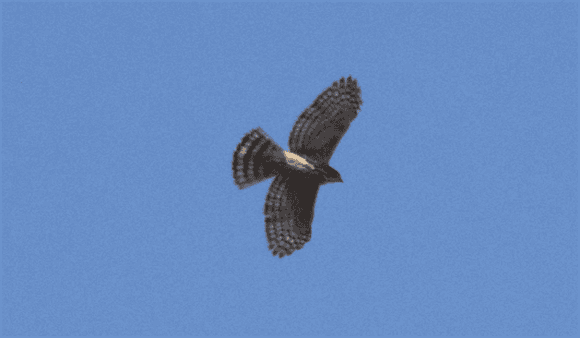Crested Eagle
The Crested Eagle (English name: Crested Goshawk, scientific name: Accipiter trivirgatus) is a bird of the genus Accipiter in the order Accipiteridae. It is a medium-sized raptor in the genus Accipitridae of the order Accipitridae, also known as crested goshawk (Taiwan), pink bird hawk, and crested sparrowhawk. Body length 30-46 cm, weight 224-450 g, upper body dark brown. Resident birds usually inhabit mountain forests and forest edge areas at the foot of mountains below 2,000 meters. They also appear in bamboo forests and small jungle areas, and occasionally move to the plains at the foot of mountains and near villages. In China, it is mainly distributed in Sichuan, Yunnan, Guizhou, Guangxi, Hainan Island and Taiwan. It is a national second-level protected animal.

The Crested Eagle is a medium-sized raptor, with a body length of 30 meters -46 cm, weight 224-450 g. The head has a crest. A large (42 cm) powerful hawk. With short crest.
Adult male bird: gray-brown upper body, horizontal spots on both wings and tail, brown lower body, white vertical stripes on the chest, white belly and thighs with almost black thick horizontal spots, white neck with almost black vertical stripes. The pattern reaches the throat, with two black mustache lines.
Sub-adult birds and female birds: similar to adult male birds, but the vertical stripes and horizontal spots on the lower body are brown, and the upper body is lighter brown. When flying, its wings appear shorter and rounder than those of other eagles of the same genus.
The upper body of the young bird is dark brown with dark brown feather edges, the back neck is dark brown with slight black spots; the head has broad dark brown feather edges. The skin of the lower body is yellowish white or light brown or white, with a black central vertical stripe on the throat, and black vertical stripes or longitudinal black spots on the chest and abdomen. The wild features are obvious and easy to identify.
Iris - brown to greenish-yellow in adult birds; bill - gray, with yellow cere; feet - legs and feet yellow.
Usually inhabit mountain forests and forest edge areas at the foot of mountains below 2,000 meters. They also appear in bamboo forests and small jungle areas, and occasionally move to plains at the foot of mountains and near villages. It is good at hiding and alert, often hiding among leaves, and sometimes perching on isolated branches in open areas. It flies slowly and not very high, and its wings often press down or vibrate during circling flight. Sometimes it also uses the rising thermal air to hover and soar in the air. When hovering, its wings often press down and shake, which is very territorial. Mostly solitary activities.

Mainly frogs, lizards, rodents, and insects It feeds on other animal foods, including birds and small mammals. It mainly hunts on the ground in the forest, often hiding among the branches, and only attacks suddenly when prey is found.
The calls are relatively quiet, with sharp screams of he-he-he-he-he-he and long barks.
The breeding period is from April to July. During the breeding season, they often soar over the forest while making loud calls and nest in tall trees in coniferous or broad-leaved forests, 6-30m above the ground. The nest is rough, mainly made of dead branches, with some green leaves inside. The nesting locations are mostly on river banks or next to ponds, not far from the water. If the breeding is successful, the nest will continue to be used next year.
Each clutch usually lays 2-3 eggs, which are oval in shape and measure 43-54mm×37-41mm. They are extremely territorial during the incubation period and sometimes even attack people who come near the nest.
The number is relatively common and not rare regionally, but the population size is not high. It is listed as a rare species in the bird volume of the "Red Data Book of Endangered Animals in China"; it was listed in Appendix II of CITES in 1995; it has been included in the list of national key protected wild animals.

 扫一扫微信交流
扫一扫微信交流
发布评论